|
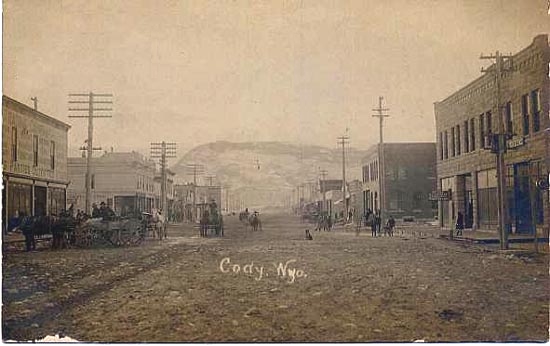
Sheridan Ave., looking west, Cody, Approx. 1910
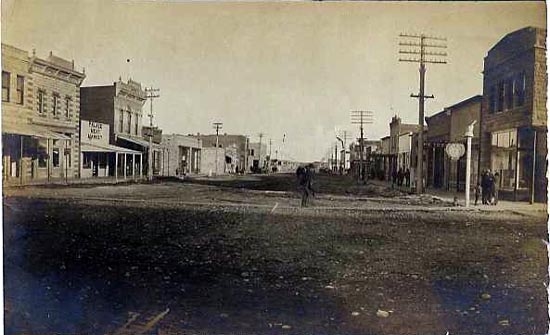
Sheridan Ave., looking east, Cody, Approx. 1910
The above photo was taken from in front of the Irma Hotel. Compare with next photo from
approximately 1950.
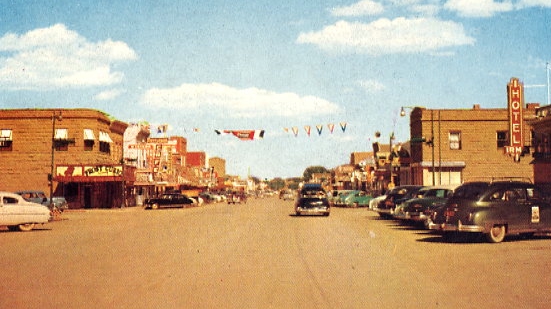
Sheridan Ave., looking east, Cody, approx. 1950.
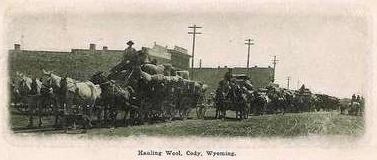
Wool Train, Sheridan Ave., 1908.
Although, William F. Cody certainly had in mind tourism to Yellowstone, the primary purpose of the
founding of the Town of Cody was agricultural to take advantage of irrigation and the Carey Act. For discussion of
the Carey Act, see Laramie. Indeed, the project was one of the
first Carey Act developments in the State. The project was promoted in the Wild West Show. As observed by one of
his partners, George Beck, Cody was "the best advertised man in America." But as long the Wild West show business
manager Nate Salsbury was alive, some control over the flow of money was maintained. In 1902, Salsbury died and Cody's
investments began to grow. By 1905, Cody's Shoshone Land and Irrigation Company had some
6,500 acres under irrigation. Settlers remained few and far between, but the
lawsuits flowed like water, with some twenty-six suits filed against the Company. Today, the project is
regarded as one of the most sucessful reclamation developments, but it never made money.
Nathan Salsbury (1846-1902), was born in Illinois and orphaned at an early age. During the Civil War,
Salsbury served in the Union Army. Following the war, Salsbury became an
actor and playwrite. In 1875, he organized a traveling company, "Salsbury's Troubadours." In 1884, he
became a co-owner of the Wild West show. At least some of the sketches included within the
Wild West were authored by Salsbury. He also organized a black traveling
show known as "Black America" with a cast of 600.
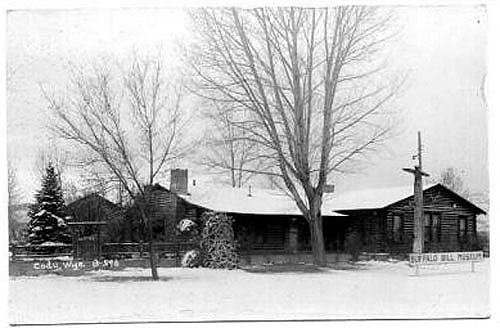
Buffalo Bill Museum, undated.
Following Cody's death in 1917, plans for a proper memorial in Cody began. As noted earlier, Cody had the
misfortune to die in Denver, permitting the residents of that State to memorialize him with a grave on
Lookout Mountain west of Denver rather than on Cedar Mountain overlooking
his namesake city. Nevertheless, on February 19, 1917, the Legislature appropriated
$5,000 to be used for a memorial. By March the Buffalo Bill Memorial Association was
organized which received contributions from local citizens as well as large contributions
from Cornlius Vanderbilt and Rodman Wanamaker. Fifty-five acres of land
was acqured adjoing the town and on July 4, 1924 an equestrian statute costing
$35,000 was dedicated. The above pictured museum, modeled after Cody's ranch house at the TE near
Meeteetse, was dedicated in 1927. Admission was twenty-five cents.
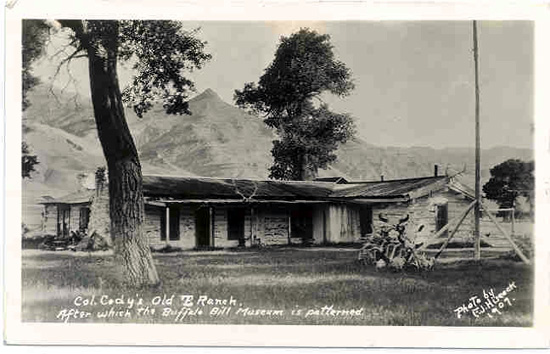
Buffalo Bill's T E Ranch, near Meeteetse, undated, photo by F. J. Hiscock
The museum to a great extent was dependent upon tourists traveling to Yellowstone. During World War II
tourism to Yellowstone ceased and the Association borrowed $500.00 for maintenance
expenses but had no ability to repay. Thus,
the directors of the Association conveyed the property to the
Town of Cody. Following the war, the Association wanted the property back but the
Town refused. In a lawsuit, the Wyoming Supreme Court, Town of Cody v.
Buffalo Bill Memorial Ass'n, 64 Wyo. 468, 196 P. 2d 369 (1948), directed the
reconveyance of the museum to the Association. From then on the museum has grown. A new building
was constructed across the street and in 1969 the original building was conveyed again to the
Town.
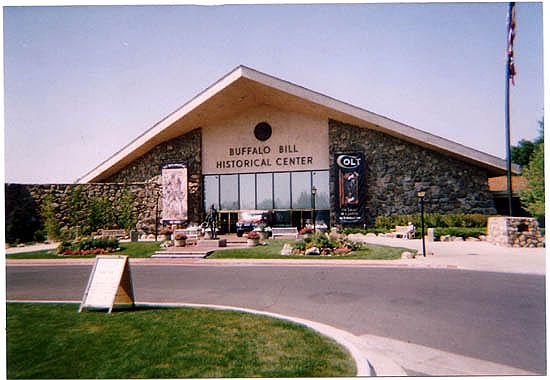
Buffalo Bill Museum, 2003, photo by Mark Morgan
The museum across the street is now a collection of five world class museums including
the largest collection of American arms in the world, a museum of western art, a museum of the plains
Indians, a museum of natural history, and a museum devoted to Buffalo Bill. To
properly see it all takes two days.

Sheridan Ave., approx. 1940, photo by F. J. Hiscock
Compare with prior photos of Sheridan Ave.
Next Page, the Cody Road to Yellowstone.
|